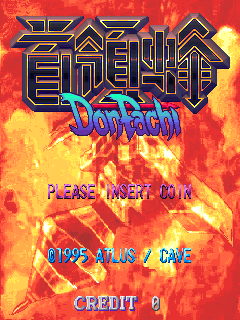DonPachi (Hong Kong)
Game Information
| manufacturer | Cave (Atlus license) |
| year | 1995 |
| clone of | donpachi |
| other clones | donpachihk donpachij donpachijs donpachikr |
| genre | Shoot-'Em-Up |
| downloads | 75 |
Screenshots










Download Details
| split set | donpachihk.zip 239.87k |
| parent set | donpachi.zip 4.62m ↗ |
| standalone set | donpachihk.7z 4.16m |
Driver Details
| source | atlus/cave.cpp |
| status | good |
| emulation | good |
| savestate | supported |
Series Details
Screen Details
| display | screen.0 |
| type | raster |
| orientation | horizontal |
| width | 320px |
| height | 240px |
| refresh | 57.55mhz |
Input Details
| player | 1 |
| type | joy |
| buttons | 3 |
| directions | 8 |
| player | 2 |
| type | joy |
| buttons | 3 |
| directions | 8 |
Chipset Details
| name | Motorola MC68000 |
| clock | 15.26mhz |
| name | Speaker |
| clock | N/A |
| name | OKI MSM6295 ADPCM |
| clock | 1.01mhz |
| name | OKI MSM6295 ADPCM |
| clock | 2.01mhz |
ROM Details
| name | size | crc |
|---|---|---|
| 37.u29 | 512.00k | 71f39f30 |
| atdp.u44 | 2.00m | 7189e953 |
| atdp.u45 | 2.00m | 6984173f |
| atdp.u54 | 1.00m | 6bda6b66 |
| atdp.u57 | 1.00m | 0a0e72b9 |
| u58.bin | 256.00k | 285379ff |
| atdp.u33 | 2.00m | d749de00 |
| atdp.u32 | 1.00m | 0d89fcca |
| atdp.u33 | 2.00m | d749de00 |
| eeprom-donpachi.bin | 128.00b | 315fb546 |
| peel18cv8p-15.u18 | 341.00b | 3f4787e9 |